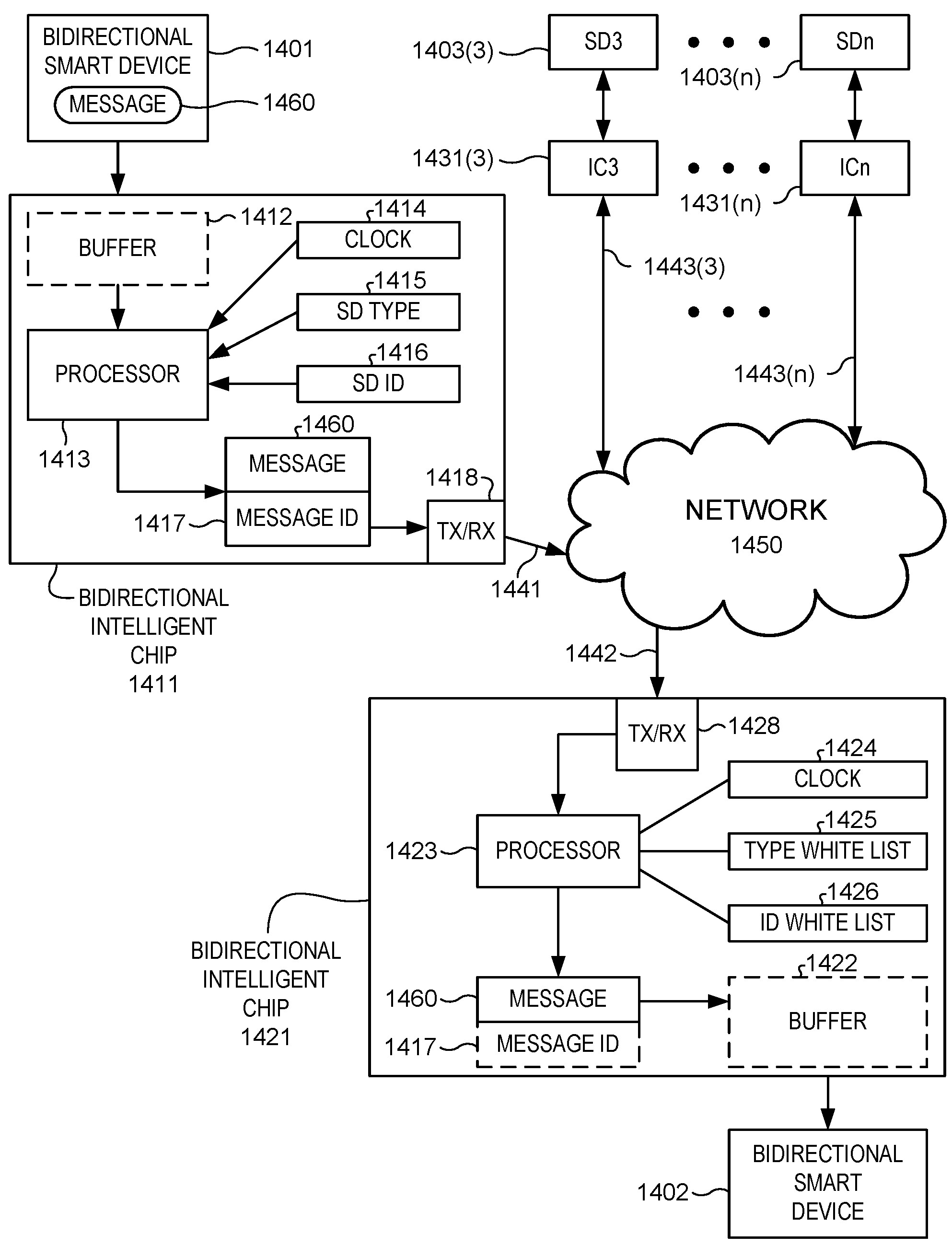IoT Patent Pipeline
This technology has applications for IoT device manufacturers, security device developers, and data security software developers, as well as smartphone, PDA, laptop, tablet, PC, server and consumer electronics manufacturers.
This figure from U.S. Patent No. 9,432,378 provides an overview of how an interface security device would be integrated into an IoT network.
(Click to Enlarge)
Gigabit Optical Access for Greater Bandwidth
Despite all the telecommuters out there, traffic jams are still common occurrences. In addition to vehicle traffic jams, there are totally different traffic jams that are actually far greater in scope and scale, yet we do not see them. We are referring to all that data trying to get to and from Internet-connected devices and appliances through limited bandwidth smart home and smart office networks. All that data causes enormous bandwidth traffic jams between all those access points. And those bandwidth traffic jams cause not just delays but communications that risk being timed out. U.S. Patent No. 9,723,388 for a “Dynamic Intelligent Bidirectional Optical Access Communication System with Object/Intelligent Appliance-to-Object/Intelligent Appliance Interaction” covers technology that enables critical connectivity by IoT and smart home and smart office installations by creating an intelligent subscriber subsystem that provides greater bandwidth at a very modest cost.
This patent is from independent inventor Mo Mazed and is one property in a four-patent portfolio that also includes an open continuation U.S. Patent Application. All of the patents in the portfolio share a 2006 Priority Date, so there is considerable retroactive patent protection. This portfolio can be used to create technology that can compete favorably against Amazon Alexa or Google Home by simply adding voice command software such as Nuance Dragon®. The portfolio includes not just an intelligent subscriber unit for machine-to-machine (M2M) or IoT connectivity in the home or office, it also provides gigabits or more of bandwidth per second at a significantly lower cost than installing new hardware. It also provides for intelligent, self-learning appliances such as a self-learning telephone.




















